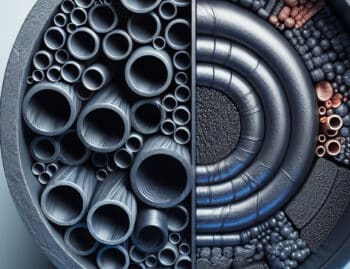
Steel is arguably one of the most important materials existing in the world today. We don’t tend to think about it often, if at all, but steel is crucial to many of the most important facets of our lives.
From infrastructure to transportation, medicine to science, and entertainment to economics, steel is the hidden support (in some cases, literally) behind it all.
Buildings and Bridges
Steel is an ideal construction material for buildings because of three main factors: its high strength-to-weight ratio, cheap production costs, and ease of maintenance after construction. It resists fire and natural disasters like hurricanes and flooding.
Not only can steel stand up to the unpredictability of nature, but it also causes less waste during construction, making for easier cleanup. Bolts, nails, and screws are made of steel.
Many of the world’s highest buildings, including the Chrysler Building and Dubai’s Burj Khalifa, would not be as tall without the sturdy support of steel.
Bridges, especially suspension bridges, wouldn’t support much weight without their share of steel. Some of the most highly traveled bridges couldn’t have even been built without the strength of steel as one of their main components.
The cars that go over these bridges wouldn’t exist either, nor would bicycles, buses, trains, ships, or planes. Car frames, seat belts, and engines are made from steel, which makes up the frames of most other transportation devices as well.
Food and Appliances
Everyday objects we hardly think twice about wouldn’t be available without steel, including bed springs, paperclips, cooking utensils, staples, and scissors. The watches we glance at briefly multiple times throughout the day wouldn’t exist.
Much food, and the things we store or cook it with, would suffer from lack of steel. Over 1,500 foods come packaged in steel cans, and over 75 percent of all major appliances are comprised of steel.
Our toasters, ovens, freezers, and refrigerators would be but figments of the imagination without steel.
Medicine
Stainless steel was made commercially available in 1912, but was first used to make surgical instruments for the ear, nose, and throat in 1916.
Today it is used in a nearly limitless number of medical instruments, including needle holders, forceps, scissors, tweezers, calipers, cannula, speculums, probes, and many more.
Surgical stainless steel instruments are hard enough to absorb energy and withstand high temperatures without cracking. Stainless steel resist corrosion and is ideal for specific implants, since certain types are inert when placed inside the human body.
Economy
Beginning with the steam engines, railways, and machinery manufactured during the Industrial Revolution, steel production has become an integral part of the economic structure of approximately 95 countries.
Not only are the materials steel helps produce invaluable to daily life, but so are the profits that the steel industry spreads throughout international economy.
Steel’s impact on every facet of our lives was and is considerable. Whether we’re catching a flight, undergoing a risky surgery, or simply storing food, steel is the often overlooked force making it all possible.











